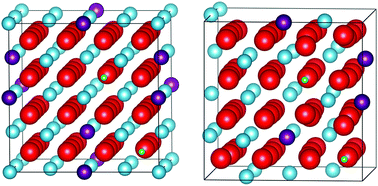The atomistic structure of yttria stabilised zirconia at 6.7 mol%: an ab initio study
Abstract
Yttria stabilized zirconia (YSZ) is an important oxide ion conductor used in solid oxide fuel cells, oxygen sensing devices, and for oxygen separation. Doping pure zirconia (ZrO2) with yttria (Y2O3) stabilizes the cubic structure against phonon induced distortions and this facilitates high oxide ion conductivity. The local atomic structure of the dopant is, however, not fully understood. X-ray and neutron diffraction experiments have established that, for dopant concentrations below 40 mol% Y2O3, no long range order is established. A variety of local structures have been suggested on the basis of theoretical and computational models of dopant energetics. These studies have been restricted by the difficulty of establishing force field models with predictive accuracy or exploring the large space of dopant configurations with first principles theory. In the current study a comprehensive search for all symmetry independent configurations (2857 candidates) is performed for 6.7 mol% YSZ modelled in a 2 × 2 × 2 periodic supercell using gradient corrected density functional theory. The lowest energy dopant structures are found to have oxygen vacancy pairs preferentially aligned along the 〈210〉 crystallographic direction in contrast to previous results which have suggested that orientation along the 〈111〉 orientation is favourable. Analysis of the defect structures suggests that the Y3+–Ovac interatomic separation is an important parameter for determining the relative configurational energies. Current force field models are found to be poor predictors of the lowest energy structures. It is suggested that the energies from a simple point charge model evaluated at unrelaxed geometries is actually a better descriptor of the energy ordering of dopant structures. Using these observations a pragmatic procedure for identifying low energy structures in more complicated material models is suggested. Calculation of the oxygen vacancy migration activation energies within the lowest energy 〈210〉 oriented structures gives results consistent with experimental observations.


 Please wait while we load your content...
Please wait while we load your content...